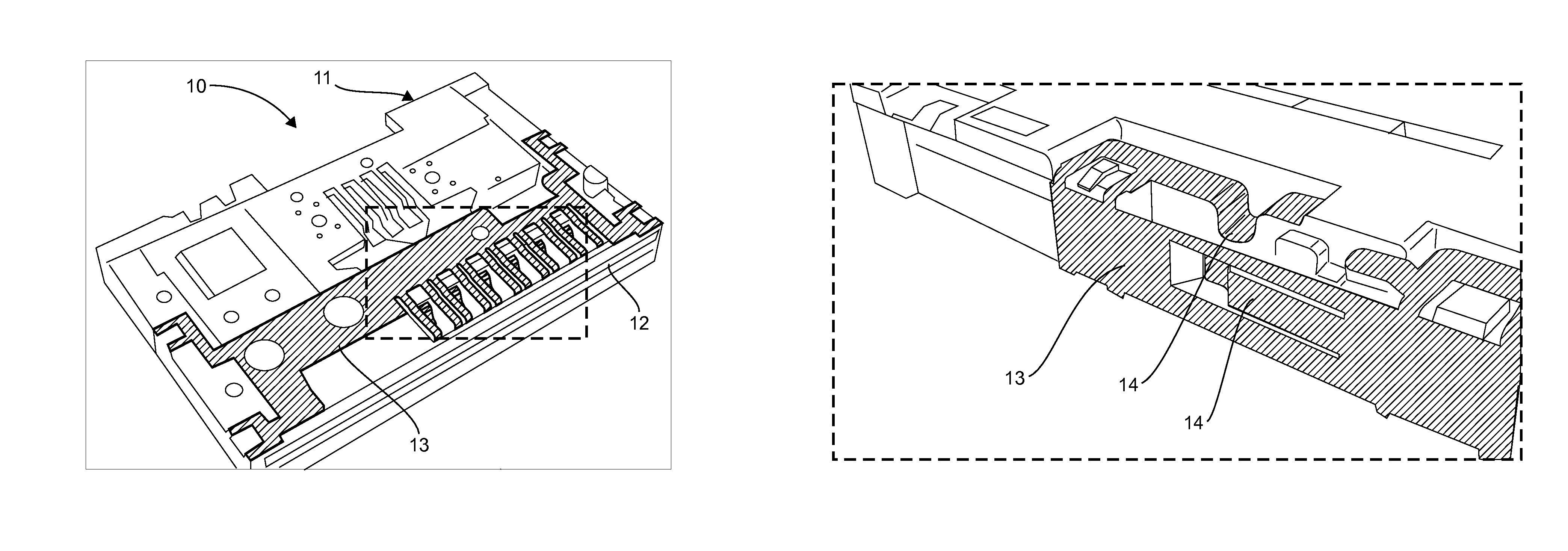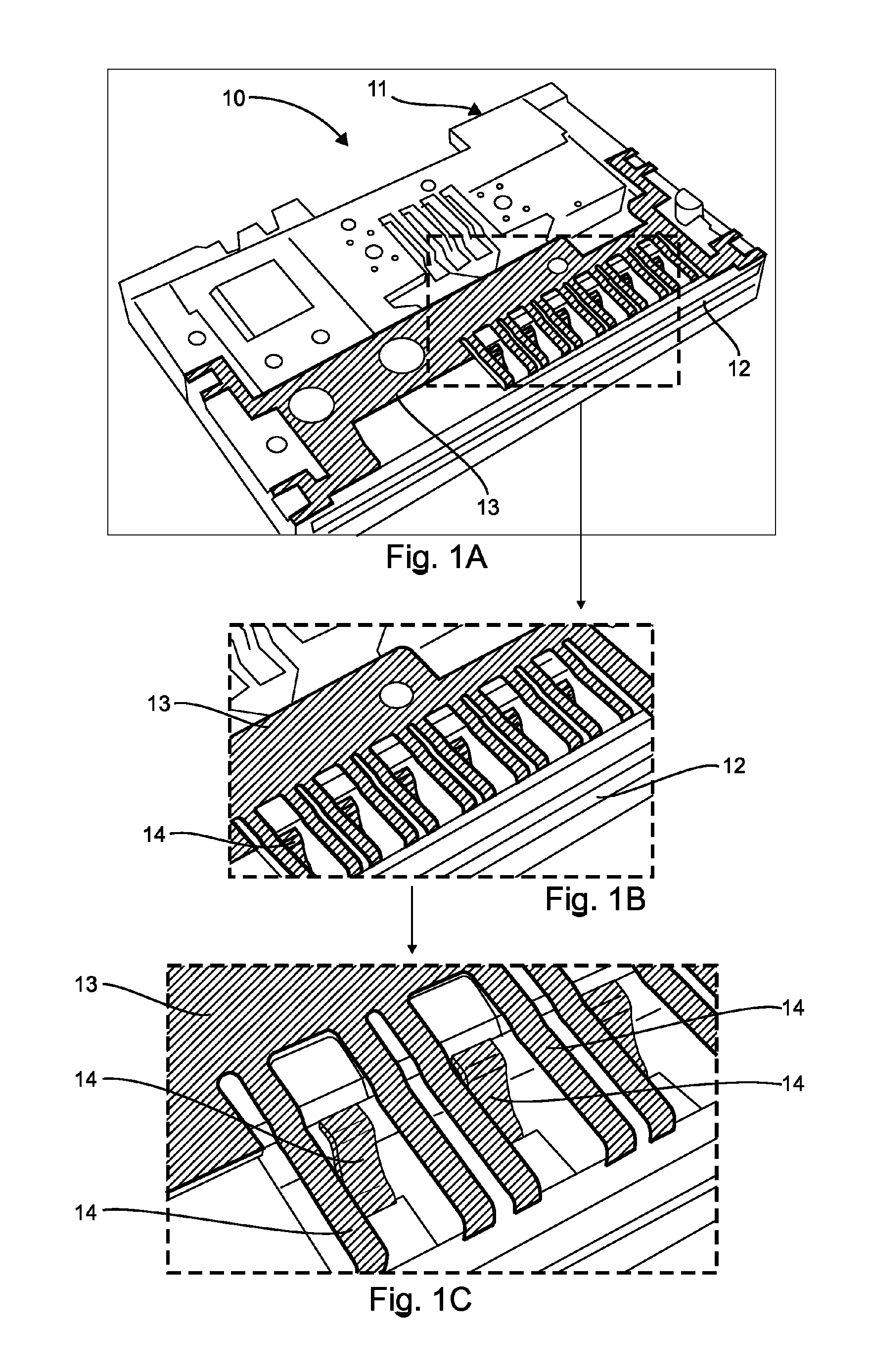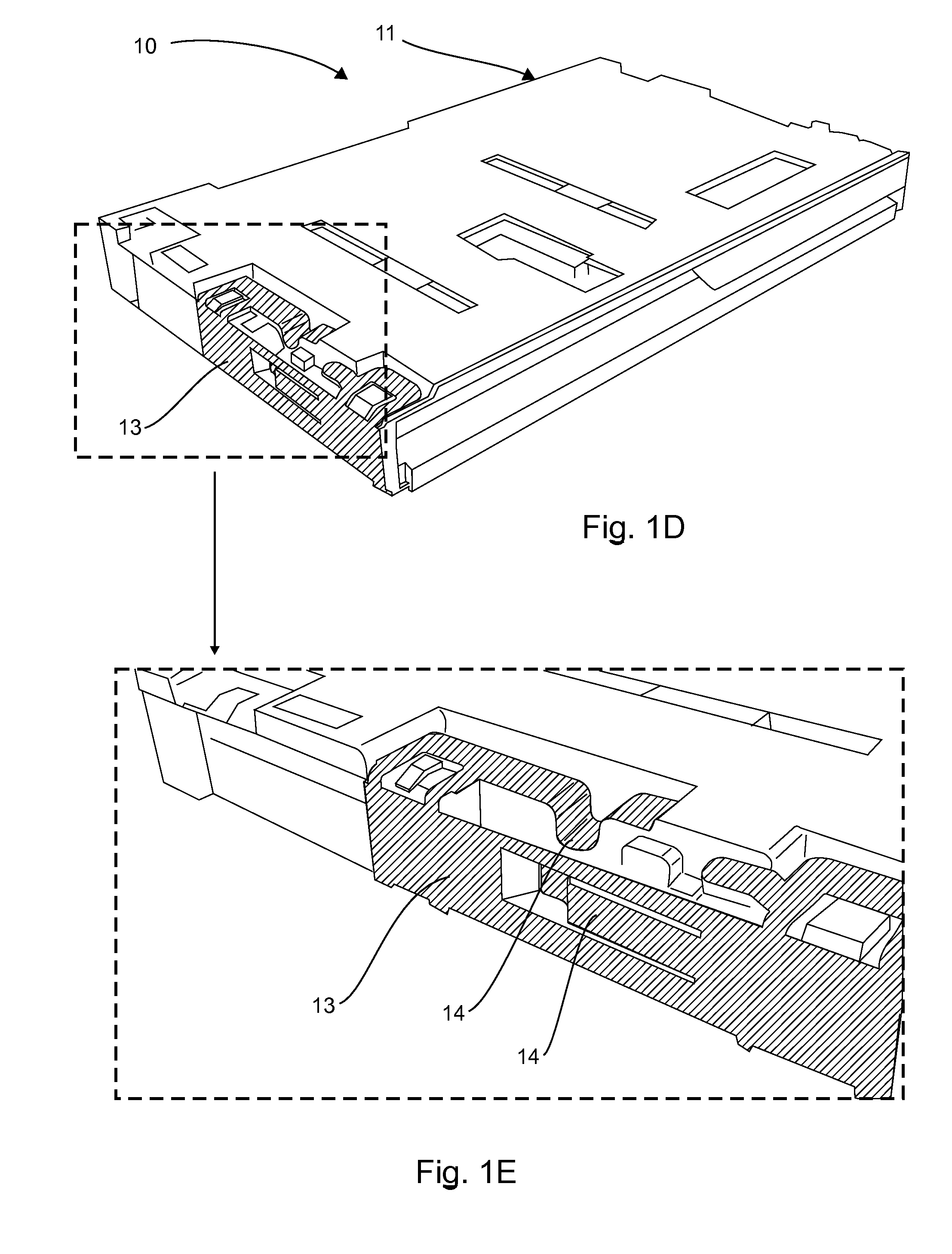Memory card connector having several conductive plastic parts with different values of resistance for discharging static electricity
a technology of static electricity and memory card connectors, which is applied in the direction of sensing record carriers, coupling device connections, instruments, etc., can solve the problems of terminal damage, electrical charge that builds up in the card, and at least the presence of electricly charged cards, so as to simplify the design of the connector, extend the service life of the inserted cards, and facilitate the manufacturing of the memory card connectors
- Summary
- Abstract
- Description
- Claims
- Application Information
AI Technical Summary
Benefits of technology
Problems solved by technology
Method used
Image
Examples
first embodiment
6.2.1 First Embodiment
[0036]In a first embodiment, the memory card connector is equipped with a specific, relatively conductive part connected to the ground of the terminal. The resistance of this part is relatively low (of the order of a few hundreds of ohms). This is a configuration requiring little investment in terms of design. All that is necessary is to build a part that gets fixed to the memory card connector. This part is connected to the ground of the terminal.
[0037]In this first embodiment, the part can be either over-molded or mounted subsequently (in the latter case, the material used does not need to have a very high temperature performance since it is not mounted on the surface of the printed circuit).
[0038]Referring to FIG. 2, we present a first embodiment of a portion of a connector for a memory card according to the invention.
[0039]The memory card connector 20 comprises an insertion module 21 with a generally rectangular parallelepiped shape. This insertion module 2...
second embodiment
6.2.2 Second Embodiment
[0042]In this second embodiment, it is the memory card connector that is fully made out of conductive material but at a very low level of conduction (the surface resistance of the material should be of the order of 105 to 106 Ω / square).
[0043]Whether it is in the first or second embodiment, it is proposed to make parts out of one of the following known materials:[0044]SABIC Innovative Plastics LNP Stat-kon REP349 PA 66 (1.00e+7 to 1.00e+9 ohm / cm in values of volume resistance);[0045]SABIC Innovative Plastics LNP Stat-kon LX04420C PEEK (1.00e+6 to 1.00e+8 ohm / cm in value of volume resistance);[0046]Cool Polymers Coolpoly® D5502 Thermally Conductive Liquid Crystalline Polymer (1.00e+14 ohm / cm 1.00e+14 ohm / cm in value of volume resistance).
[0047]In the second embodiment, the material in addition to having these electrical characteristics must withstand a re-melting temperature and wear and tear associated with the rubbing of the cards.
third embodiment
6.2.3 Third Embodiment
[0048]In this embodiment, the discharge is carried out by the use of several parts made out of conductive plastic. The advantage of this embodiment is that it enables a gradual and non-aggressive discharge of the card. In this embodiment, the memory card connector comprises a plurality of parts made out of conductive plastic, each part made out of conductive plastic having a different surface resistance.
[0049]In one particular implementation of this embodiment, a first part positioned at the inlet to the memory card connector has a surface resistance of the order of 1012 Ω / square. A second part positioned inside the memory card connector has a surface resistance of the order of 1010 Ω / square. This second part comes into contact with the card after the discharging carried out by the first part. A third part, positioned inside the memory card connector, has a surface resistance of the order of 108 Ω / square.
[0050]This third part comes into contact with the card su...
PUM
 Login to View More
Login to View More Abstract
Description
Claims
Application Information
 Login to View More
Login to View More - R&D
- Intellectual Property
- Life Sciences
- Materials
- Tech Scout
- Unparalleled Data Quality
- Higher Quality Content
- 60% Fewer Hallucinations
Browse by: Latest US Patents, China's latest patents, Technical Efficacy Thesaurus, Application Domain, Technology Topic, Popular Technical Reports.
© 2025 PatSnap. All rights reserved.Legal|Privacy policy|Modern Slavery Act Transparency Statement|Sitemap|About US| Contact US: help@patsnap.com



